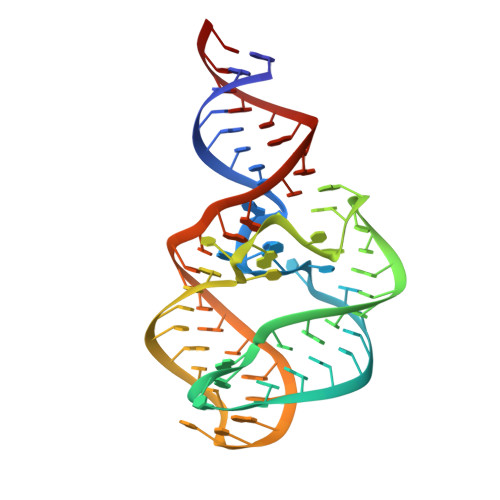Recurrent RNA motifs as scaffolds for genetically encodable small-molecule biosensors.
Porter, E.B., Polaski, J.T., Morck, M.M., Batey, R.T.(2017) Nat Chem Biol 13: 295-301
- PubMed: 28092358
- DOI: https://doi.org/10.1038/nchembio.2278
- Primary Citation of Related Structures:
5KPY - PubMed Abstract:
Allosteric RNA devices are increasingly being viewed as important tools capable of monitoring enzyme evolution, optimizing engineered metabolic pathways, facilitating gene discovery and regulators of nucleic acid-based therapeutics. A key bottleneck in the development of these platforms is the availability of small-molecule-binding RNA aptamers that robustly function in the cellular environment. Although aptamers can be raised against nearly any desired target through in vitro selection, many cannot easily be integrated into devices or do not reliably function in a cellular context. Here, we describe a new approach using secondary- and tertiary-structural scaffolds derived from biologically active riboswitches and small ribozymes. When applied to the neurotransmitter precursors 5-hydroxytryptophan and 3,4-dihydroxyphenylalanine, this approach yielded easily identifiable and characterizable aptamers predisposed for coupling to readout domains to allow engineering of nucleic acid-sensory devices that function in vitro and in the cellular context.
Organizational Affiliation:
Department of Chemistry and Biochemistry, University of Colorado at Boulder, Boulder, Colorado USA.

















